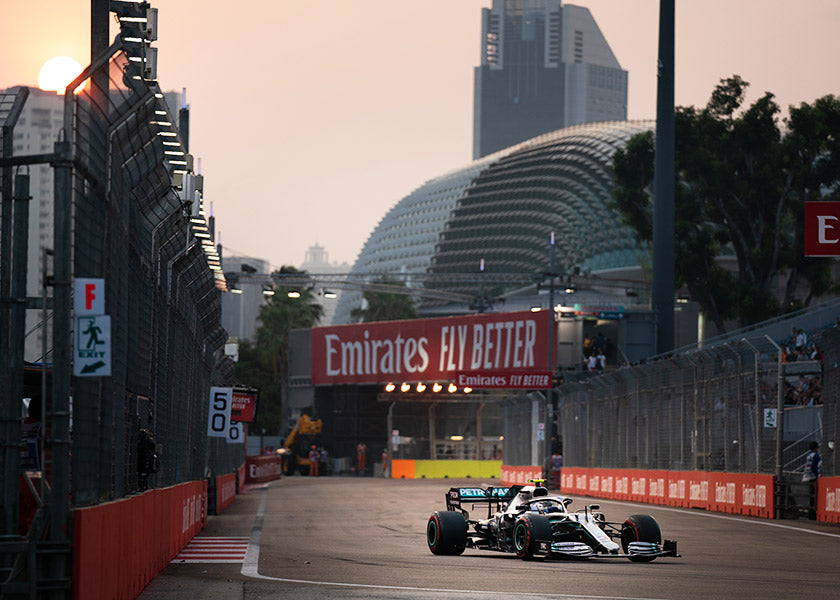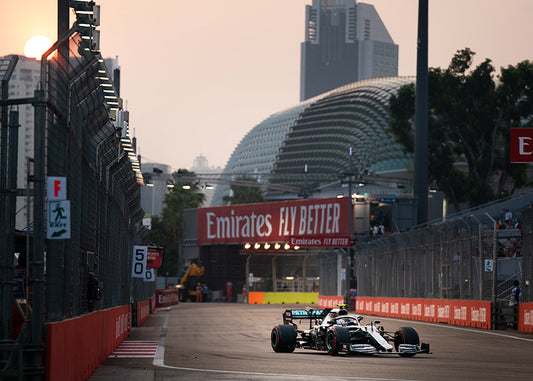It’s no secret that Formula 1 drivers often take ice baths after a session in their car. Most commonly, drivers would jump into a tub filled with ice after a free practice or qualifying session. While this is not televised, many of the Formula 1 teams have posted videos and images in the past of drivers in their “cryotherapy chambers” after sessions. McLaren, for one, posted videos of Lando Norris’ Harry-Potter-like cauldron ice bath and later Oscar Piastri’s session along with his 3 rubber ducks on Tiktok. These ice baths have been especially popular at races where the temperatures are very high.
| “It’s a perfect mix of chaos.” said Oscar Piastri
For the 20 F1 drivers, the Singapore Grand Prix is a huge ordeal having to complete 62 laps at the Marina Bay Street Circuit on Sunday night local time. In the Southeast Asian city-state, September often sees temperatures above 30 degrees Celsius and humidity sometimes 75 per cent or more, making the race a drain on the physical constitution.

"After each session, Nico (Hülkenberg) will jump straight into an ice bath to rapidly lower his core temperature, allowing his body to start recovering more quickly. Nico will typically lose 1.5 to 2kg during the Singapore Grand Prix,"his performance trainer Poole estimates.
Logan Sargeant's Performance Coach Ben Jacobs also talks about everything that goes into getting Williams Racing’s drivers prepared for this battle in the heat.
What Are Ice Baths?
Ice baths, also referred to as cold water immersion, fall under the category of cryotherapy. They are commonly used to facilitate muscle recovery following intense strength training sessions or by athletes post-event. Ice baths are even utilized by fighter pilots to recuperate after enduring high G forces during flights. The optimal water temperature typically falls within the range of 10 to 15 degrees Celsius (50-59 degrees Fahrenheit). For best results, athletes submerge their entire body, up to the neck, in the water for approximately 15 minutes.

George Russell and Lewis Hamilton in their ice tubs
How Does An Ice Bath Help Muscle Recovery?
Studies have proven that taking ice baths not only helps the athlete’s body to recover faster, but it also helps them to maintain their mental capabilities and focus. In high-speed sports like Formula 1 racing, where split-second reactions and clear thinking are imperative, this is crucial. Experts state that taking ice baths has shown to improve an athlete’s cognitive abilities, particularly in terms of reaction times. Furthermore, regular ice bath usage can foster increased resilience. Ice baths positively influence the central nervous system, leading to improved well-being, enhanced sleep quality, and, consequently, an association with heightened athletic performance.
Many experts believe that taking an ice bath will give an athlete a mental advantage. Much like meditation, an ice bath can help the driver to calm their mind, at least once they’ve gotten used to the cold temperatures. Even under extreme discomfort, the driver can remain focused, which they need to be when in the car.
While jumping into a tub full of ice is not exactly everyone’s idea of fun, there is method in the madness. Beyond the intense discomfort that your body will experience in an ice bath, your muscles do recover faster after intense exercise when they are cooled down. It’s similar to using an ice pack to take the pain away from a sprained ankle or sore muscle.
When your body is submerged into cold water, it will automatically start pumping blood faster. The movement of the blood through the body floods cells with much needed nutrients and oxygen, which is what they need to recover. In theory, having an overflow of this right after an intense session in the car will cause the body to naturally recover much faster.
Book an ice bath session today at TERAPUNG FLOAT CLUB in Seminyak, Bali.




